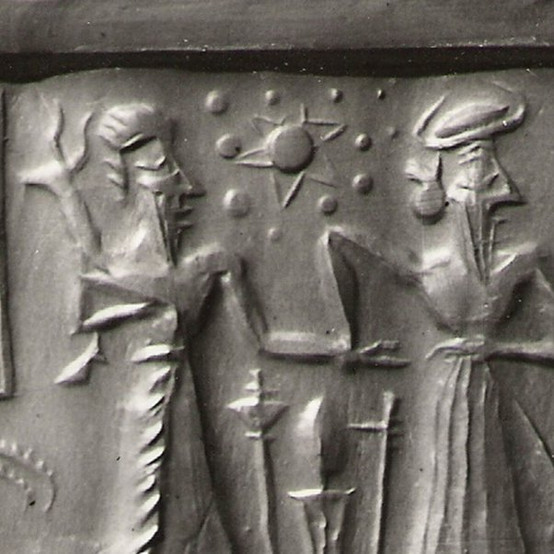Tarot Deep Dive - The Star
- Dustin
- Apr 23, 2023
- 7 min read
Every card represents an aspect of humanity that has echoed through time. In this series we are going to dive into the history of the imagery found within the tarot, the meaning of the cards and how that meaning changed over time, and the symbols present within the images of what is arguably the most well-known tarot deck of all time - the Rider-Waite (Smith) Tarot Deck. So, grab your favorite RWS deck, a cup of tea or coffee, and join me live on Sunday mornings over on YouTube as we Deep Dive into each one of the 21 Major Arcana cards continuing now with an emergence from the darkness and into the light of The Star.

The Star, Daughter of the Firmament, L’étoile

Long have humans looked up in the darkest of nights in wonder at the sparkling stars above wondering what lay beyond this world above. Even today, the discovery of new stars, planetary bodies, and the depths of space hold us enraptured. Many ancient civilizations venerated the heavens above and the stars and create sophisticated astrologically aligned temples, which we don't fully understand even to this day. The Sumerians were particularly adept at Astronomy and even mapped the stars on clay tablets some 5,500 years ago. One star in the night sky, which is actually a planet in our own solar system, garnered much attention from the ancient peoples, Venus, or The Morning Star. Even in Christianity we see the symbolism of the star in the story of Jesus' birth - The Star of Bethlehem, or even the many references to the morning star throughout the new testament. Stars have always fascinated us, held power over us and had special magical, spiritual, and philosophical significance.
Cylinder seal VA 243. Museum artifact published by Anton Moortgat, "West Asian Cylinder Seals," Vorderasiatische Rollsiegel (1940): 101. [The figure to the far left may depict Inanna]

Astronomy can be traced all the way back to Assyro-Babylonian times and is the foundation for both scientific Astronomy and metaphysic Astrology practices today. Interestingly in the Sumerian cylinder seal we see above we see the sun depicted with the planetary bodies around it - some even theorize it includes Pluto and Ceres - both of dwarf planets within our solar system. In many artworks from the Sumerian and Babylonian cultures, and in religious works the world over, we see depicted an 8 pointed star. This symbol may change slightly from culture to culture but the underlying meaning is typically closely linked. This naturally, as with the others before, leads us to this archetypical symbol to be included within the Major Arcana of the Tarot. Let us now take a look at the significance of this symbol to the world at large.
The octagram & Sacred Nature of Eight

By its very definition an octagram is an eight-angled star polygon. A symbol that can be traced right back through human history that appears time and time again in various religious, philosophical, and esoteric contexts. In fact, the Sumerian word Dingir which means 'god' or 'goddess' when written in cuneiform is the symbol 𒀭 - an eight pointed star. In ancient Mesopotemia we see this symbol used to represent Anu and the most well know adaptation of this symbol is the Star of Ishtar or Inanna, a goddess of love and war. For those keen eyed cartographic fans reading this you may also recognize this symbol in its modern day association.

In the Americas, the Mi'kmaq tribe uses tan eight pointed star on doorways and thresholds to ward against evil and as a symbol of Hope. They call it Wejkwapeniaq which means “the coming of the Dawn”

In Hindu traditions the goddess Lakshmi has eight emanations represented by two overlapping squares forming an 8 pointed star shape that symbolizes the eight forms of wealth: monetary, travel, patience, prosperity, nourishment, knowledge, health, and family.

In Buddhism we see an eight spoked wheel called the Dharmachakra that represents The Noble Eightfold Path which was taught by the Buddha as a route one may take to leave suffering behind the the breaking of attachments. The paths are known as right understanding (Samma ditthi), right thought (Samma sankappa), right speech (Samma vaca), right action (Samma kammanta), right livelihood (Samma ajiva), right effort (Samma vayama), and right concentration (Samma samadhi). This symbol also appears in Hinduism and Jainism often associated with the concept of Dharma.

Even in Islamic art, which forbids the use of iconography and symbols, the geometric design and shape called the Rub El Hiz also known as the Arabian Islamic Star, is a Quraïsh tribe Arabian symbol. The Rub el Hizb symbol is used in Arabic calligraphy to mark the end of a chapter. Its most familiar use is found within the Muslims’ holy book, the Quran, where the symbol is used for the division of the text into passages. Also known as khatim-sulayman or khatim (and it is even mentioned in the Quran that way), to be translated as “the seal of prophets”, the origin of this geometric shape is associated with the Seal of Solomon in Judaism by some people. In Christian traditions the number eight frequently represents beginnings, resurrection, salvation and super-abundance.

In Wicca - a relatively modern religion by standards, we see the eight pointed star used to represent the wheel of the year borrowing holidays and festivals from ancient Celtic and Saxon traditions.

Lastly my favorite variant of this symbol is the one adopted by practitioners of chaos magick. The symbol originates from Michael Moorcock's Eternal Champion stories. In them, the Symbol of Chaos comprises eight arrows in a radial patter which was then later adopted by modern occultists to represent chaos magick.
Visual Evolution
The Star, like many other cards in the Major Arcana we have discussed, stays fairly unchanged through time. In fact, it really is not until the post modern era that we start to see significant changes in the way scene is depicted on this card. We can see the use of the Octagram Star symbol from the earliest decks right on through to the work of Crowley and Harris in the Toth Tarot.
Evolution of Meaning
De Mellet (1781): The Star. The creation of the stars and fishes.
Mathers (1888): The Star. Hope, expectation, bright promises.
Golden Dawn (1896): Daughter of the Firmament. Dweller between the Waters. Star. Hope, faith, unexpected help.
Waite (1910): The Star. Loss, theft, abandonment; another reading says hope and bright prospects.
Crowley (1944): This card is attributed to the letter He', as has been explained elsewhere. It refers to the Zodiacal sign of Aquarius, the water- bearer. The picture represents Nuith, our Lady of the Stars. For the full meaning of this sentence it is necessary to understand the first chapter of the Book of the Law. The figure of the goddess is shown in manifestation, that is, not as the surrounding space of heaven, shown in Atu XX, where she is the pure philosophical idea continuous and omniform. In this card she is definitely personified as a human-seeming figure; she is repre sented as bearing two cups, one golden, held high above her head, from which she pours water upon it.
The Symbols
Nude Figure Kneeling

The figure here is thought to represent Binah on the Three of Life. Symbolic of all form, structure, and nature - she represents the highest spiritual aspect of the feminine.

Pouring Jugs The water in her right hand pours into a pool of water, and the one in her left onto the fertile ground splitting into five streams. These are the waters of life and spirit. The heavens and mundane earth and its five elements. As above so below. A return to the mundane to bring forth the enlightened knowledge gained.

Mountain Range
Be sure to check out other blog post Symbols in the Tarot - Earth, to learn more about this specific symbol.

Eight Pointed Stars The Eight Pointed star here could be associated with the Sephira Hod, the Star of Lakshmi, the Eight Fold Path, a compass star, or many of the other octagrams we discussed. The stars surrounding it are often thought to represent the seven sisters - or the Pleiades star cluster. A grouping of stars in the night sky that has its own deep esoteric meanings and associations.

The Bird on the Tree The little bird on the tree is often though to be an Ibis as described by Papus - the Egyptian bird that represented the god Toth - however some also associate with the Bennu, an ancient Egyptian deity linked with the Sun, creation, and rebirth. He may have been the original inspiration for the phoenix legends that developed in Greek mythology. Which is likely where some more modern interpretations describe this bird as a pheonix. All symbols of the soul and rebirth.
As always be sure to check out our live discussion on this very topic over on YouTube:
References
Barbier, L. (2021). Tarot and divination cards: A visual archive. Cernunnos, 2021.
Butler, B. Dictionary of the Tarot. New York: Schocken Books, 1986.
Chang, T. Susan. Tarot Correspondences: Ancient Secrets for Everyday Readers. Llewellyn Pulbications, 2018.
Crowley, Aleister (aleister Crowley). Book of Thoth - (Egyptian Tarot). Red Wheel/Weiser, 2017.
Dean, Liz. The Ultimate Guide to Tarot: a Beginners Guide to the Cards, Spreads, and Revealing the Mystery of the Tarot. Fair Winds Press, 2015.
Decker, Ronald; Dummett, Michael. A History of the Occult Tarot. London: Duckworth, 2019.
Fiebig, Johannes, and Evelin Burger. The Ultimate Guide to the Rider Waite Tarot. Llewellyn, 2013.
Katz, Marcus. Secrets of the Waite-Smith Tarot: the True Story of the Worlds Most Popular Tarot: with Previously Unseen Photography & Text from Waite & Smith. Llewellyn Publications, 2015.
Kelly, Henry Ansgar, Satan: A Biography, Cambridge, England: Cambridge University Press, 2006.
Place, R. M. The fool's journey: The history, art, & symbolism of the tarot. York, 2010.
Waite, A. E. Pictorial Key to the Tarot. Dover Publications Inc, 2005.
Wen, Benebell. Holistic Tarot. North Atlantic Books, 2015.
















